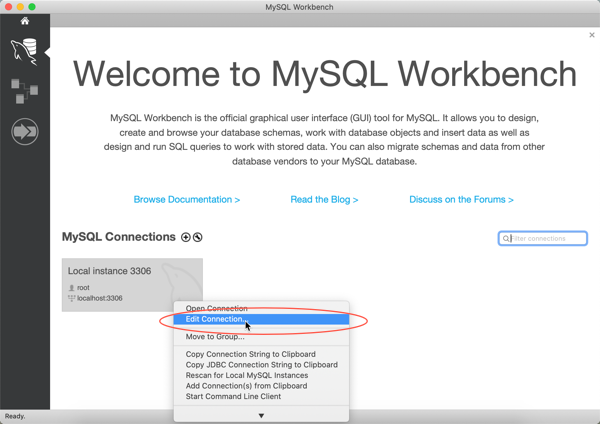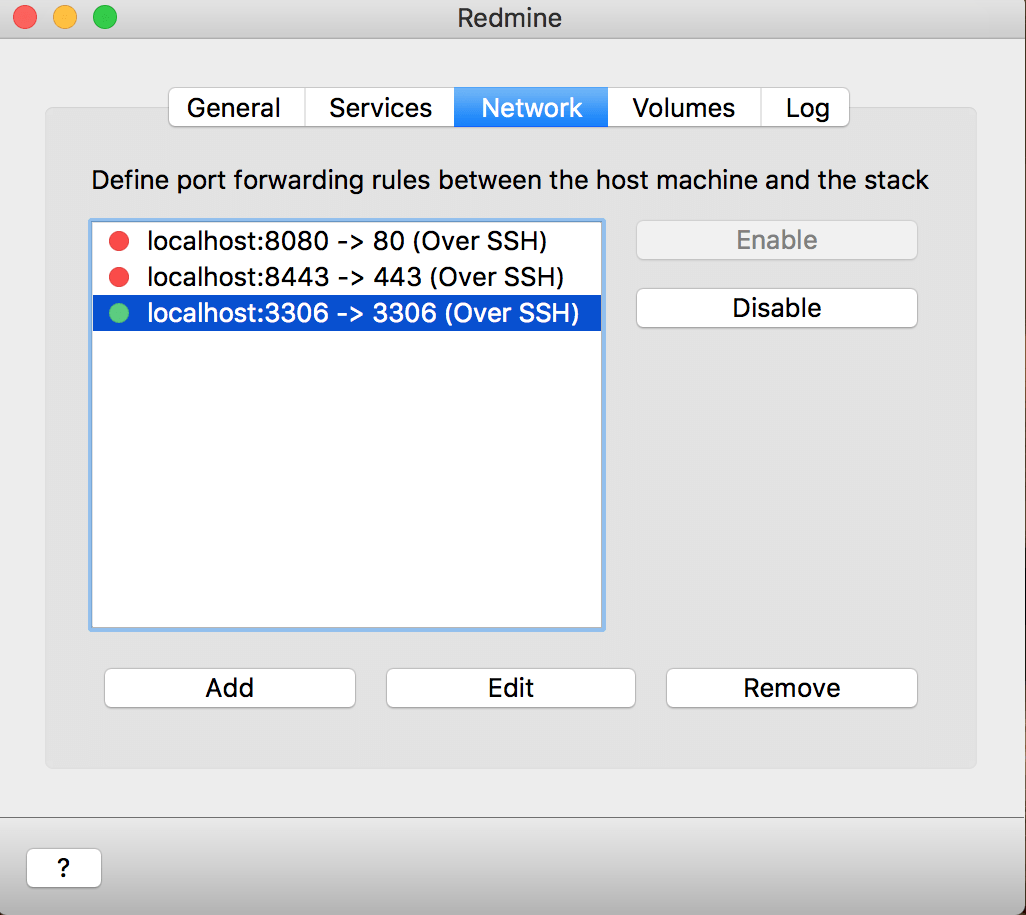/ Installing and Upgrading MySQL / Upgrading MySQL / Copying MySQL Databases to Another Machine 2.11.14 Copying MySQL Databases to Another Machine In cases where you need to transfer databases between different architectures, you can use mysqldump to create a file containing SQL statements. MySQL Community Edition is a freely downloadable version of the world's most popular open source database that is supported by an active community of open source developers and enthusiasts. MySQL Cluster Community Edition is available as a separate download. A developer would use Milton to wrap an existing data source, such as a database or content management system, and expose it via the WebDAV protocol. It has been tested to work with WindowsXP, Linux, and Mac OS X. Instaviz is a graph drawing application for the iPhone. It can store the graphs you create on a remote WebDAV server. Page generated in 0.012 sec. Using MySQL 8.0.23-commercial Content reproduced on this site is the property of the respective copyright holders. It is not reviewed in advance by Oracle and does not necessarily represent the opinion of Oracle or any other party. MySQL Utilities is now covered under Oracle Lifetime Sustaining Support Per Oracle's Lifetime Support policy, as of May 30, 2018, MySQL Utilities is covered under Oracle Sustaining Support. Some features of Utilities are on the roadmap for Shell, users are encouraged to migrate to MySQL Shell.
2.11.14 Copying MySQL Databases to Another Machine
In cases where you need to transfer databases between different architectures, you can use mysqldump to create a file containing SQL statements. You can then transfer the file to the other machine and feed it as input to the mysql client.
Use mysqldump --help to see what options are available.
If GTIDs are in use on the server where you create the dump (gtid_mode=ON), by default, mysqldump includes the contents of the gtid_executed set in the dump to transfer these to the new machine. The results of this can vary depending on the MySQL Server versions involved. Check the description for mysqldump's--set-gtid-purged option to find what happens with the versions you are using, and how to change the behavior if the outcome of the default behavior is not suitable for your situation.
The easiest (although not the fastest) way to move a database between two machines is to run the following commands on the machine on which the database is located:
If you want to copy a database from a remote machine over a slow network, you can use these commands:
You can also store the dump in a file, transfer the file to the target machine, and then load the file into the database there. For example, you can dump a database to a compressed file on the source machine like this:
Transfer the file containing the database contents to the target machine and run these commands there:
You can also use mysqldump and mysqlimport to transfer the database. For large tables, this is much faster than simply using mysqldump. In the following commands, DUMPDIR represents the full path name of the directory you use to store the output from mysqldump.
First, create the directory for the output files and dump the database:


Then transfer the files in the DUMPDIR directory to some corresponding directory on the target machine and load the files into MySQL there:
Macos Mysql Client Tutorial
Do not forget to copy the mysql database because that is where the grant tables are stored. You might have to run commands as the MySQL root user on the new machine until you have the mysql database in place.
After you import the mysql database on the new machine, execute mysqladmin flush-privileges so that the server reloads the grant table information.
MySQL Community Edition is a freely downloadable version of the world's most popular open source database that is supported by an active community of open source developers and enthusiasts.
MySQL Cluster Community Edition is available as a separate download. The reason for this change is so that MySQL Cluster can provide more frequent updates and support using the latest sources of MySQL Cluster Carrier Grade Edition.
MySQL 8.0 is the most current GA release. Download MySQL 8.0 »
Macos Mysql Client Cli
Learn What's New in MySQL 8.0 and view the Performance Benchmarks.
Online Documentation:
| Looking for previous GA versions? |
Macos Mysql Client Command

Free Mysql Client Macos
Please report any bugs or inconsistencies you observe to our Bugs Database.
Thank you for your support!
